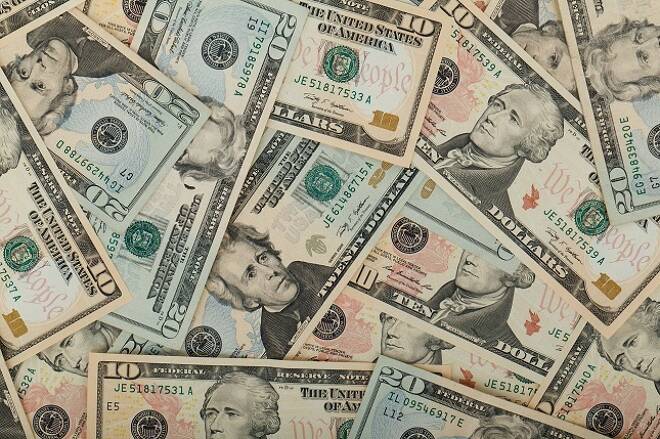Advertisement
Advertisement
Treasury Yields, U.S. Dollar Finish Lower After U.S. Import Prices Disappoint
By:
U.S. import prices increased less than expected in April as a rebound in the cost of petroleum products was tempered by a decline in food prices.
The U.S. Dollar retreated against a basket of major currencies of a third session on Friday, but still managed to close flat for the week. The selling pressure was fueled by profit-taking after a three-week run-up.
June U.S. Dollar Index futures settled at 92.41, down 0.11 or -0.11%.
The 16-day rally was primarily fueled by a hawkish Fed monetary policy that led to the widening of interest rate spreads, making the U.S. Dollar a more attractive investment and signs of cooling growth in the rest of the world.
U.S. Economic Data
U.S. import prices increased less than expected in April as a rebound in the cost of petroleum products was tempered by a decline in food prices.
The Labor Department said on Friday import prices rose 0.3 percent last month. Data for March was revised to show import prices falling 0.2 percent instead of being unchanged as previously reported.
Economists polled by Reuters had forecast import prices rising 0.5 percent in April. In the 12 months through April, import prices increased 3.3 percent, matching March’s gain.
The report also showed export prices accelerated 0.6 percent in April after gaining 0.3 percent in March.
In other news, U.S. consumer sentiment was slightly higher than anticipated in the beginning of May, coming in line with revised April results.
The University of Michigan’s report on consumer attitudes about the economy hit 98.l8 in a preliminary May reading, higher than the 98.5 expected by a survey of Reuters economists.
In what could be a telltale sign of the strength of the labor market, the May result found that “fewer consumers anticipated further declines in the unemployment rate” according to chief economist Richard Curtin.
U.S. Treasury Markets
U.S. government debt yields held steady on the final trading day of the week after import prices increased less than expected.
The yield on the benchmark 10-year Treasury note was slightly higher at around 2.973, while the yield on the 30-year Treasury bond slightly lower at 3.114 percent.
Forex Markets
The EUR/USD finished higher on Friday, driven by short-covering and profit-taking. A loss of economic momentum in the Euro Zone is encouraging the European Central Bank to take a more cautious approach toward ending its current financial crisis policies.
On Friday, ECB President Mario Draghi said the Euro Zone needs a new “fiscal instrument” to help weaker member nations if they are being over penalized by investors during a debt crisis. Additionally, the action in the European debt markets indicates traders have pushed out expectations of an ECB rate hike to the second half of 2019.
About the Author
James Hyerczykauthor
James is a Florida-based technical analyst, market researcher, educator and trader with 35+ years of experience. He is an expert in the area of patterns, price and time analysis as it applies to futures, Forex, and stocks.
Did you find this article useful?
Latest news and analysis
Advertisement
